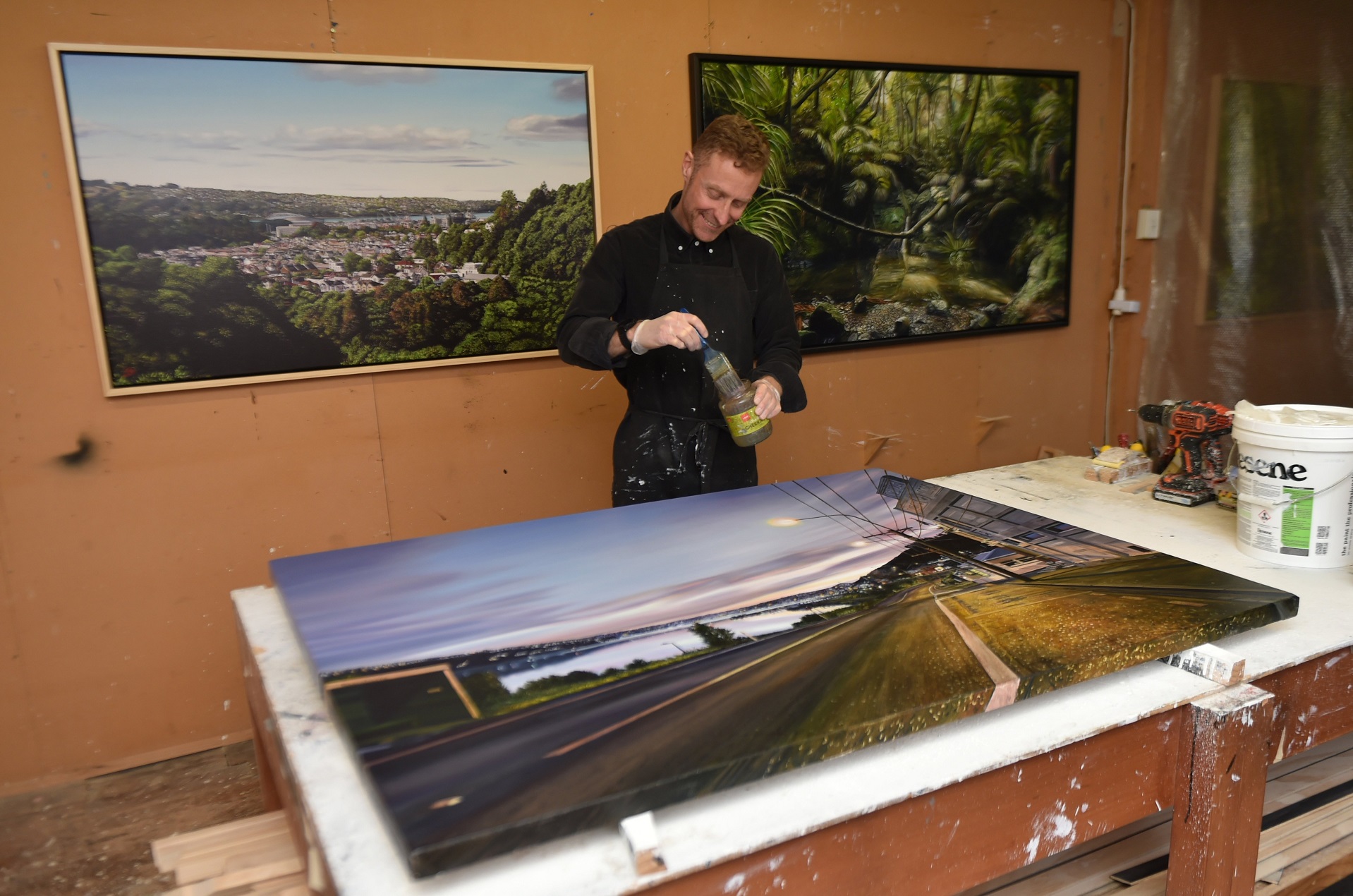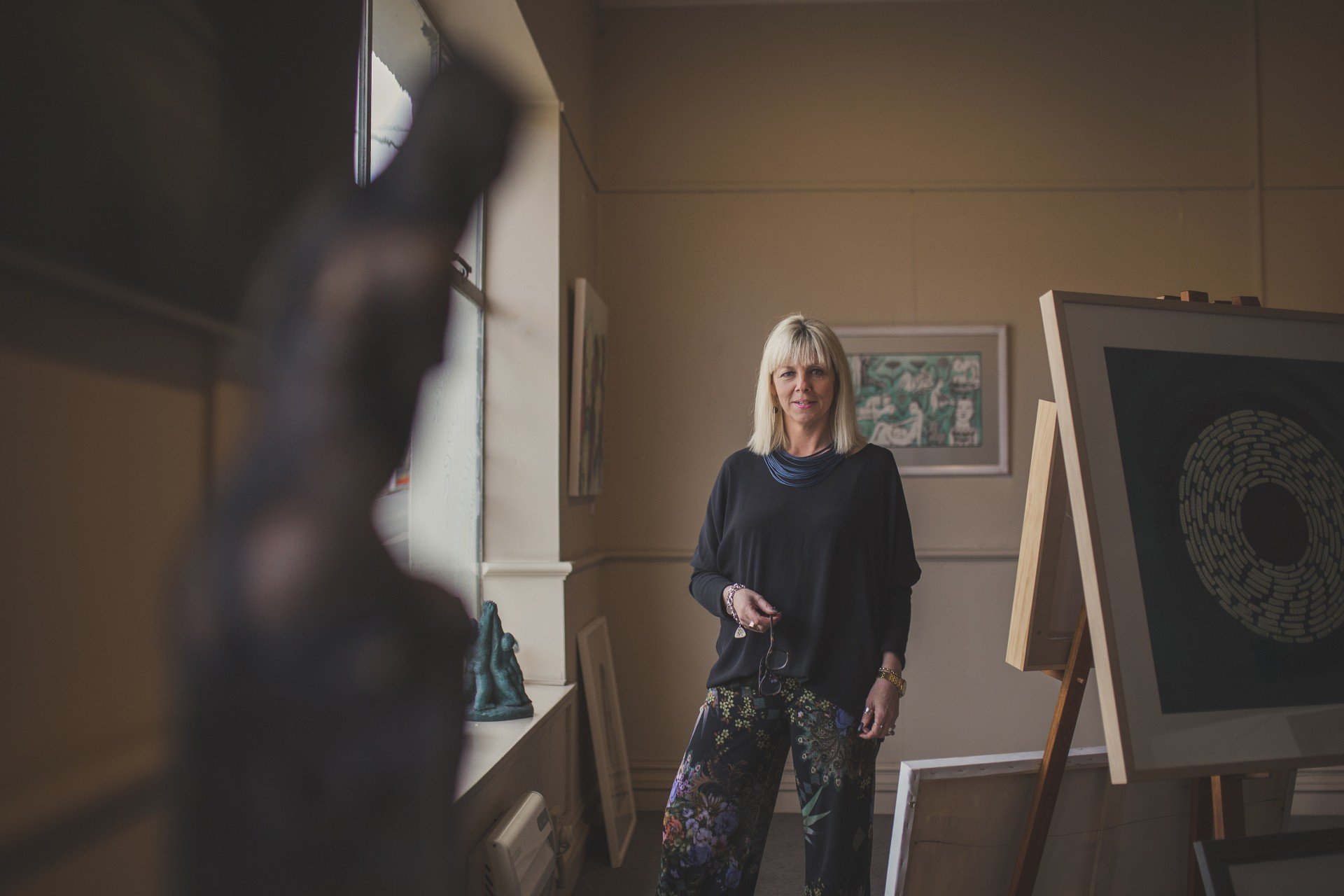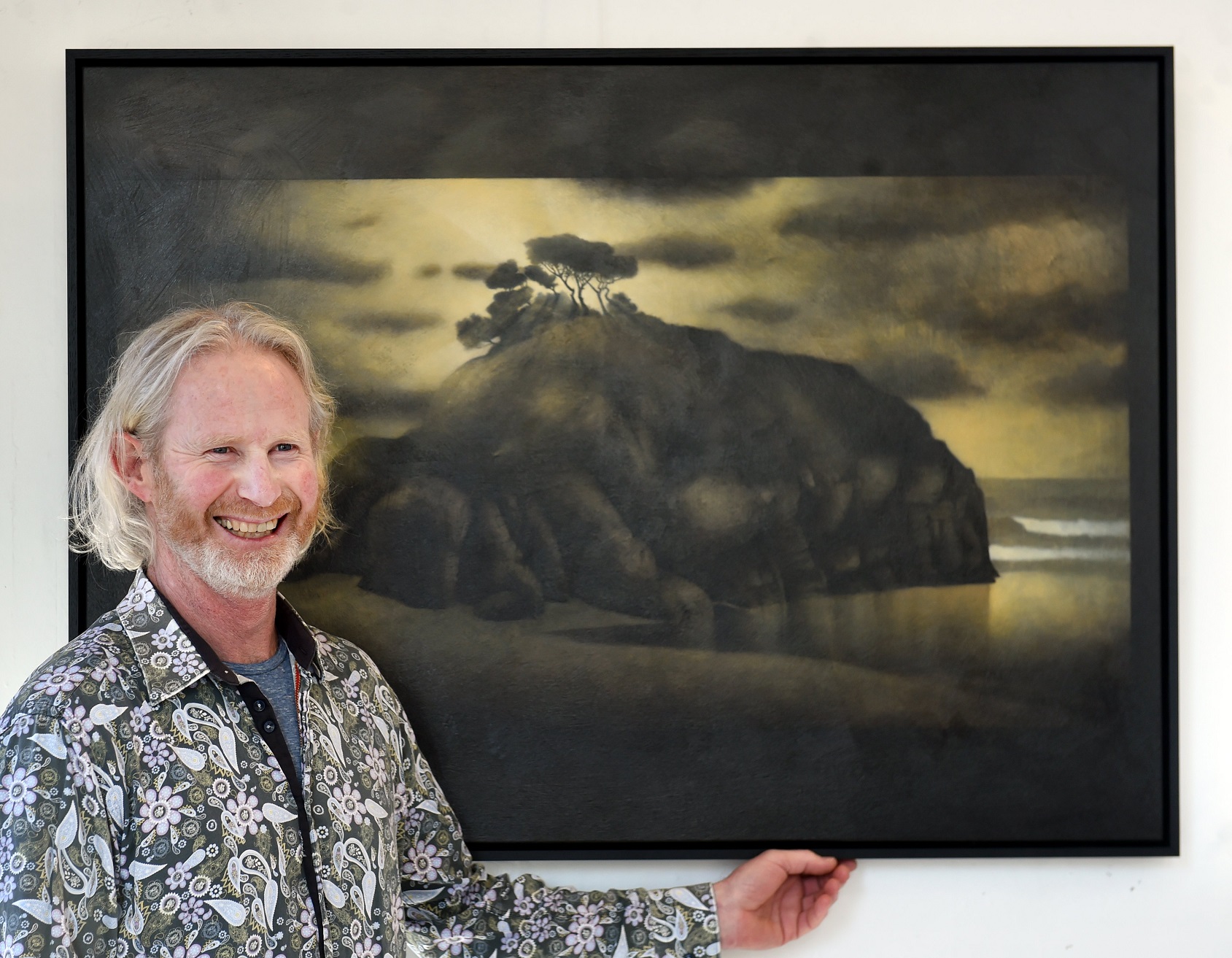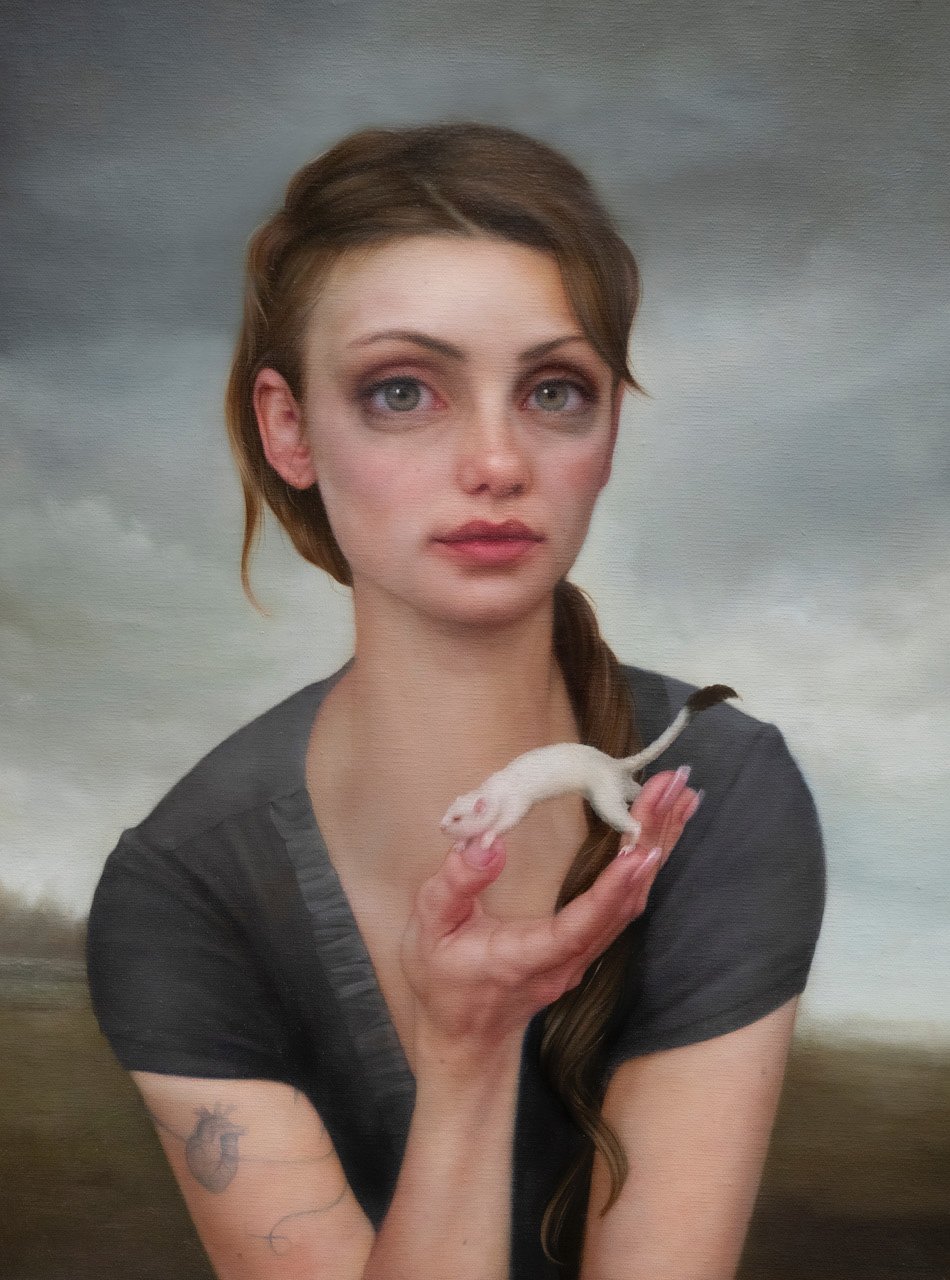
Dunedin artist Sam Foley
Q. What does having a good relationship with a gallery mean to an artist?
I think it means everything. You can’t sit back and expect a gallery to do all the work for you, promotionally or otherwise, but if you have a good gallery in your corner, it can only help move things forward. It’s important to feel that they also believe in the work you are doing, and I’ve always had that at The Artist’s Room.
Q. When did you first exhibit with Michelle?
It was shortly after The Temple Gallery closed back in the late 2000s. That left a fairly big hole, but Michelle soon proved to me that she was the right gallery to partner with. I’m sure she agrees with me in saying that we always work well together, contrasting and complementing each other in many ways. It has to be symbiotic, and we have both enjoyed some very real successes over the many years of our professional relationship. We get along socially too, which, although not crucial, does seem to help things in a broader context.
Q. Tell us about the work for anniversary exhibition.

Q. How has your work changed over the past 20 years?
Look, I’d like to think my work is always evolving but there are key themes I always seem to circle back on. It’s hard to view it objectively, and I think there might be others who can answer that question more accurately than me. Technically, there’s always refinements and efficiencies that happen. Thematically, the last two shows were a little less accessible, but that’s naturally what happens if you are consciously trying to push your practice forward.
Dunedin artist Steev Peyroux
Q. When did you first exhibit with Michelle?
Michelle asked me to show work with her when she first opened her gallery in 2004. At that time I was just establishing myself as an artist after retiring from being a dancer. She had to talk me into having my first ever solo exhibition in 2006, and it was one of the most memorable moments in my life. It’s been a real partnership putting on shows together over the past 20 years and bouncing ideas off each other. It’s nice now to sit in the gallery and reminisce about which exhibitions we liked best.
Q. What does having a good relationship with a gallery mean to an artist?

One thing that sets Michelle apart is that she puts herself out there as a photographic artist. She puts herself in the artist’s shoes, and this gives her an empathy for the sometimes stressful process her artists inevitably go through.
A little known fact about Michelle is that she is responsible for the first art nightclass at the Dunedin School of Art in 2009. She wanted to learn how to do printmaking so she asked me to set up a printmaking nightclass at the DSA where I work as a technical teacher. She is very persuasive so I did what she wanted and this became the start of a thriving art nightclass programme which now has 18 classes a week. Michelle has also given many graduates from the DSA a start in their professional careers, many of whom are still with her today.
Q. Tell me about the work you have done for the anniversary exhibition.
I’ve painted an island as a singular isolated landform, which for me is analogous to a single human figure. This helps me to focus on the land having a character, almost like I’m painting a portrait. I have to feel connected to a place to want to paint it, and the feeling I have towards the land where I live is put into the painting.
Q. How has your work changed in the past 20 years?
When I started with The Artist’s Room 20 years ago I was a printmaker, and in this painting I’m interested in revisiting my printmaking past while still using paint. I laid down a uniform coat of wet paint, as I would with a mono-print, then used a rag to draw the image in by a process of deletion. But whereas in printmaking you make the image on a block and transfer this to a sheet of paper by putting it through a press, in my painting the block is the canvas, the finished image. I like the process-focused feeling in printmaking, where each step is a distinct layer, interacting with previous layers in ways that are not always predictable.

Dunedin artist Sarah Dolby
Q. What does having a good relationship with a gallery mean to an artist?
If, like me, you predominantly rely on galleries to show and sell your work, a good relationship is paramount. It should be a partnership that hopefully lasts for years. Circumstances change, whether they be economic or personal; both parties need to be flexible and supportive. Trust is also a huge part.
To ensure a good fit with a gallery I look for one that represents artists with a similar aesthetic and/or work that I admire. Within New Zealand I can visit these galleries and get a sense of how my work will be represented in their space.
This can be tricky when exhibiting overseas as you can’t directly meet with the gallery staff and see the space. Earlier this year I took a bit of a gamble and participated in a group show in New York. It was collab between astrolabe gallery and Biodiversa Foundation. I had no idea how my work would be received, but with great communication from the gallery everything went really well and my piece sold.
Q. When did you first exhibit with Michelle?
Michelle approached me at the very beginning when she was setting up the gallery. At that stage I was really just beginning my art career and we were very much on the same page with what we wanted to achieve together. It was amazing back then, the economy was strong and exhibitions would sell out before an opening. Michelle would create such a buzz around people’s work. It was a lot of fun. Her enthusiasm was contagious — and still is.
My early exhibitions with Michelle gave me such a lot of confidence in myself as an artist as at this stage I was just really developing my identity and style as an artist.

I have seen her navigate her way through big challenges such as Covid lockdowns to smaller ones such as stressed-out artists — me included. I have seen her go above and beyond to fix a situation and form lasting relationships with both her artists and clients. Her dedication to her artists is impressive and she can always advise on an exhibition-related issue that might pop up, drawing on her now 20 years’ experience. Her gallery is so welcoming ... maybe this is partially due to the recently unpacked art propped up against the walls and rolls of bubble wrap. I really love that about her space that it isn’t pretentious at all.
Q. How has your work changed over the past 20 years?
The most noticeable change in my practice recently is that I want to make the time to paint exactly what I want and not be hamstrung by deadlines. It is so easy to get caught up in a cycle of getting a body of work together and showing that work within a short time frame. My paintings take such a long time and I don’t want it to suffer due to time constraints. Therefore I am a lot more selective about how I use my time and where I show my work.
My style has continued to develop as have my skills over the past 20 years. Looking back there is quite a difference. I continue to learn and now have a mentor in the US who was a former teacher at the Academy of Fine Arts in New York. Looking ahead I want to extend the narratives in my work and keep challenging myself.
— Dolby has been unable to complete a new work for the annivesary exhibition.
TO SEE
"Masterpieces", The Artist’s Room, August 17-












